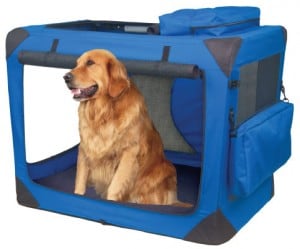From the Desk of Sharda Baker
Good day and welcome everyone!
This is Sharda with another potty train newsletter.
Let’s get to know them more by seeing their appearance
Here we go!
Crate training older dogs is very similar to crate training younger dogs or pups.
Many older dogs, especially those that have been in an animal shelter or even in a vet’s office, may have a natural fear of being confined in a crate.
The key to helping the dog is to have him or her understand that the crate is their comfort area, not a place to go when they have been bad.
Crate training provides a place of safety and security for an older dog, just as it does for a puppy.
All dogs have an instinct to stay in a den or enclosed area, so working with an older dog to help them learn the crate is their safe haven will take some attention and time but is well worth it.
To make crate training as positive follow these guidelines and helpful potty training tips:
- The crate should be the correct size. The dog should be able to stand up comfortably without hitting his or her head, and should be able to lay down with front feet extended in at least one direction in the crate.
- Provide a blanket or liner to the crate that is padded and will be comfortable for the dog to lie down on. A washable fabric is often best, as it will become dirty from use.
- Add some chew toys to provide something for the dog to play with while in the crate.
- Provide water for the dog in the crate. Clip on pet water bottles are available that will not drip or splash onto the liner or blanket.
- Position the crate so that the dog can see people or see the room.
- They are less likely to feel isolated if they can still see a familiar area or the family members.
- Start by just having the dog walk into the crate. Usually a treat placed and the door is a good start. Allow the dog to even just grab it and move elsewhere to eat the treat. Put another one just a bit farther in. Keep doing this until the dog will walk in and eat the treat inside. Do not close the door or detain the dog in the cage at this point.
- Encourage the dog to stay in the crate for longer periods of time. This can be done by feeding treats through the other of sitting beside the crate and talking to the dog. Always praise the dog for entering the crate but ignore any behavior when coming out of the crate.
- When the dog goes into the crate and stays try shutting the door for 30 seconds. Gradually increase this time. If the dog becomes panicky at any point go back to a shorter time. Stay right beside the crate during this training, do not walk off and leave.
- Once the dog stays calm for 5 or more minutes with the door closed try moving off a bit farther, but stay in the same room. Gradually increase your distance and the time away.
Work at the pace set by the dog, not by what you would like to accomplish. Once the dog realizes the crate is just a temporary place to rest, he or she will be very comfortable staying in the crate when you are away. Never leave a dog crated for more than four hours to prevent any accidents.
To housebreak using the crate, simply put the dog into the crate after eating or drinking, and after 10 to 20 minutes take the dog outside to the toilet area. If he or she eliminates, praise them and play with them, and return with them to the house.
If they don’t, return them to the crate, without saying a word, and then try again in five or ten minutes. Within a very short period of time your dog will learn to go outside.
Many dogs prefer to stay in the crate at night, so simply bring the crate into the bedroom so you can monitor their behavior or need to go outside.
I hope that you learned a lot from today’s potty train newsletter.
All the best and take care
Warmly,
Sharda Baker

